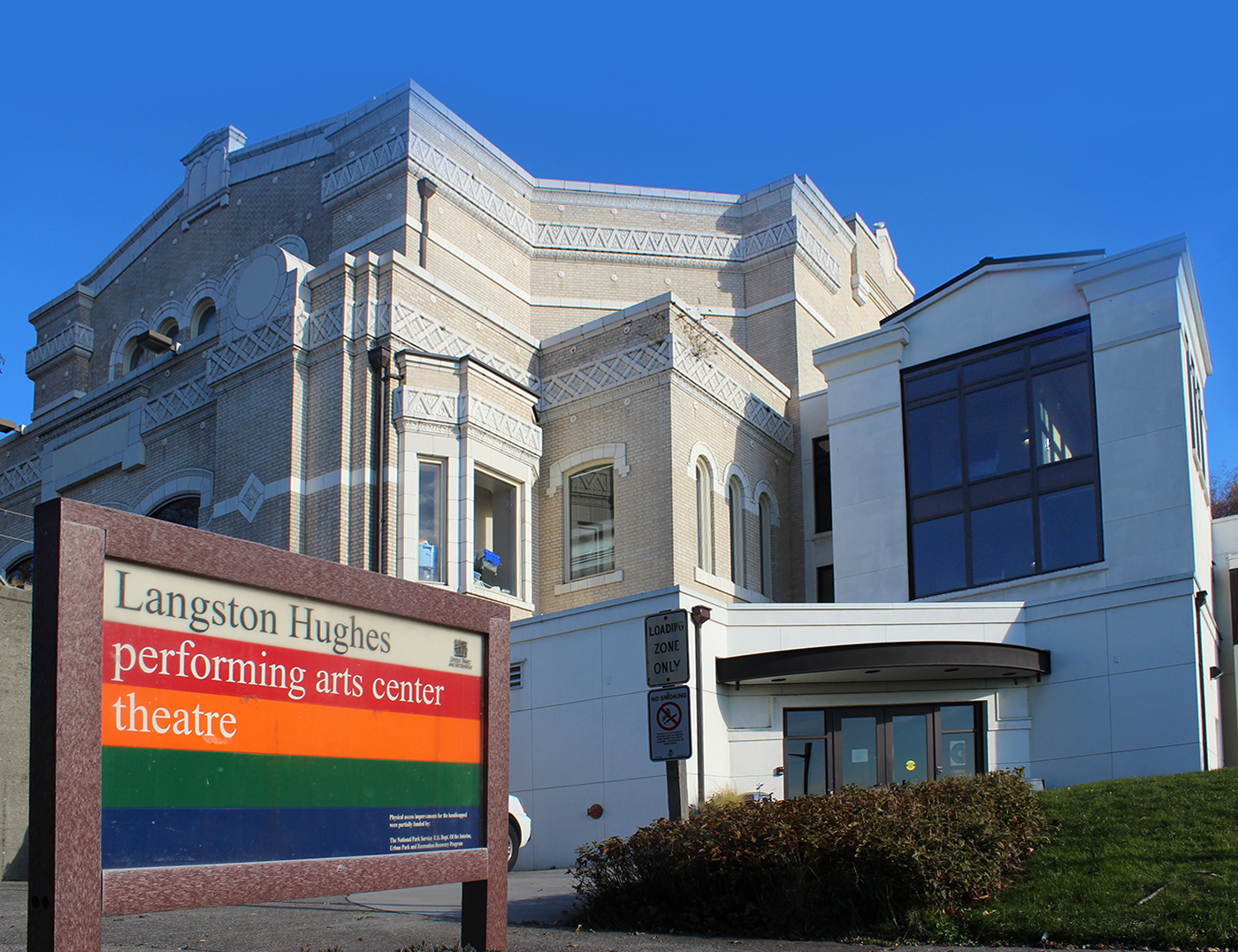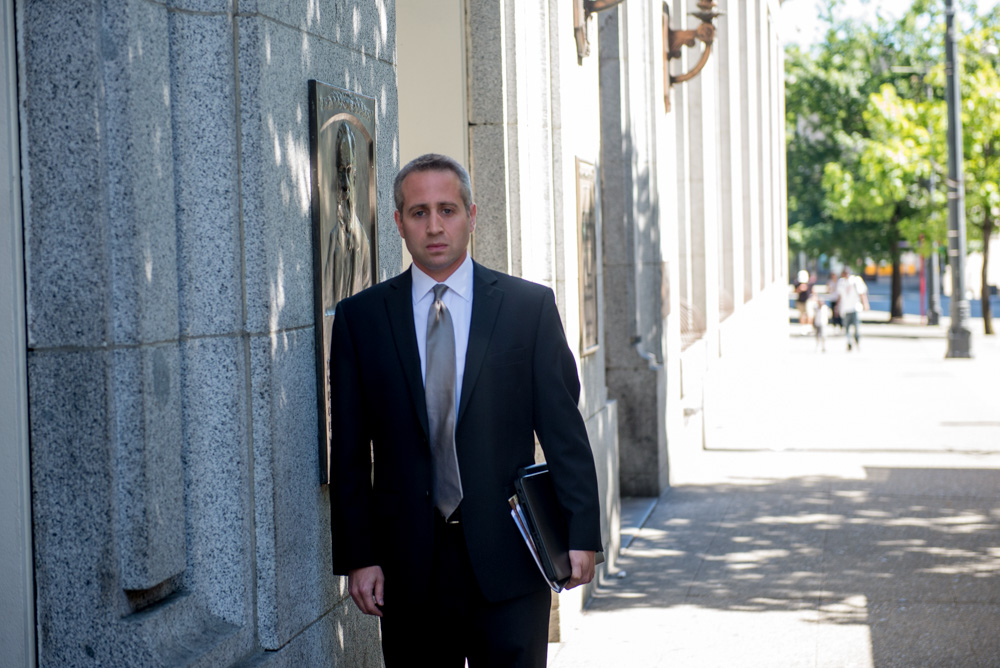Last month, Langston Hughes Performing Arts Center was the site of a pivotal work in a young playwright’s career. The play, The Purification Process, was local writer Malika Lee’s first, and was developed in conjunction with Langston Hughes. It’s exactly the type of event the Seattle institution is often lauded for—producing new work by talented but novice African-American writers.
Shortly before the curtain parted for the play’s dry run, director Jacqueline Moscou appeared onstage in the theater’s main auditorium discuss how plays come to being. The making of a new stage production is a special process, explained Moscou, “and it is never-ending.”
The same could easily be said of the debate over the future of the arts center itself.
Located in the heart of the Central District, the iconic building that houses Langston Hughes was acquired by the city in 1969 and converted to a theater and community center in 1973. Since then, its operations have largely been funded with public dollars, in part to ensure that Seattle’s black community has a place in the city’s theater scene.
But while applauding that mission, city officials have at various times over the past decade signaled that the city is no longer able, or perhaps willing, to continue picking up the full tab, which next year is expected to total more than $800,000. Several attempts have been made at a long-term plan for managing and funding the theater. Committees have been formed and reports commissioned. So far, none have been acted upon.
Now, after multiple false starts, Seattle is proposing yet another plan: that management of Langston Hughes be assumed by an independent nonprofit organization. But it remains unclear whether that is the best option for ensuring the theater’s future, or simply the most financially expedient one.
A draft copy of the proposal, obtained by Seattle Weekly, will be given its first public airing next Monday at a Seattle City Council briefing. Pending approval from the council, the city will continue as owner of the theater property, while responsibility for its programming and funding is handed to a nonprofit.
“I think everyone knows that there is some risk involved, and that this isn’t necessarily going to be a slam-dunk,” says Councilman Nick Licata. “I think the key thing here is for the city government to play an active role in making a successful effort.”
How successful that effort is
depends largely on how soon the proposed nonprofit can replace the city’s subsidy, which could be difficult. Midsize theater companies like Langston Hughes—those with annual budgets between $200,000 and $1.2 million—are typically the most difficult to fund, says Jim Kelly, executive director of King County arts agency 4Culture. “They’re the ones that are large enough to need contributed income, but don’t have that deep well of supporters that larger organizations like a Seattle Repertory Theater have.”
According to the committee’s draft plan, the proposed nonprofit will be operational by the beginning of the fiscal year 2016 and ready to fully assume the theater’s financial obligations by 2018. That gives the city roughly four years to establish the organization’s nonprofit status and recruit a leadership board to help generate through fundraising what the theater cannot earn.
And if previous earnings are any indication, the fundraising burden would be significant. Langston Hughes was closed for building upgrades for two years beginning in spring 2010. It did not reopen until May 2012, making a full accounting of its budget hard to come by.
But according to budget figures obtained from the city, Langston Hughes brought in just $70,880 in ticket and rental fees during the 2012 fiscal year. That’s up from the $56,963 it earned in 2009, the year before the renovations.
Compare those numbers to Langston Hughes’ operating costs: In fiscal year 2013, Langston Hughes was budgeted $745,698 by the city, the bulk of which was devoted to staff pay. The 2014 proposed budget bumps that total up to $809,180.
Drawing bigger-ticket shows could ensure a healthier bottom line—but that might distract from the organization’s traditional mission of nurturing talented writers. Office of Arts and Culture Director Randy Engstrom says he expects the Institute will be able to do both.
“I think there are a number of ways Langston can generate more revenue,” Engstrom says. “But we’re not just going to rent out the theater to the highest bidder at the exclusion of the community groups that have fewer resources and need the space. There has to be a balance between what a sustainable operating model looks like and how it can support and engage community.”
Seattle is home to various theater companies and organizations that focus on presenting African-American art. But Langston Hughes remains the only one with a mission and a theater space dedicated exclusively to that purpose.
To local arts patron Paul Toliver, a member of the action committee that drafted the plan to be considered by the city, that’s what makes the city’s subsidy essential. With it, the Institute can pursue its mission without worrying about it being altered, he says.
“The history is that those who fund the arts support more European-centric art than African-centric,” Toliver says. “And if that plays out, and the focus is shifted to something more multicultural, it means there’s less art that reflects me as an African-American . . . Others on the committee may disagree—and they did—but this new plan puts the mission at risk.”
Opinions vary, however. Langston Hughes’ particular mission is what could make it attractive to well-heeled funders, says 4Culture’s Kelly, who wasn’t on the committee. “Certainly funding organizations have woken up to the fact that there’s a lot more out there than just Western culture,” he says. “Because Langston Hughes is focused on a very particular audience and is creating a lot of new work, I think you’ll see the funding community show its support.”
Predicting the future of Langston Hughes
after the transition is difficult. Given the uniqueness of its mission, drawing conclusions based on comparisons to other midsize nonprofit theater companies is bound to be imperfect. But to get a glimpse, it’s worth examining the financial health of a near-analogue.
Like Langston Hughes, the nonprofit Seattle Public Theater operates out of a building owned by the city: the Bathhouse Theater on the shores of Green Lake. Financial disclosures filed with the IRS in 2011 put SPT’s budget at just over $450,000, and it has operated at a slight deficit for the past three fiscal reporting periods. That’s not uncommon for a nonprofit of SPT’s size, says Kelly, and shows the importance for theaters of stashing away savings when times are good.
But if SPT’s financial state represents the status quo for midsize regional theaters, the Intiman Theatre is the local performing-arts community’s cautionary tale. Once nationally renowned, the company has yet to recover from its 2011 financial implosion, when it shut its doors amid reports that its governing nonprofit had sunk into debt totaling $2.3 million. Intiman has since downsized its offerings from a full season to a summer festival, and ceded management of the Intiman Playhouse at Seattle Center to Cornish College of the Arts.
Whether the city would consider bailing out Langston Hughes should it find itself in a similar financial situation is an open question. Reductions of the city’s subsidy to Langston Hughes, if any, will not occur until after 2015, says Randy Engstrom. But while the plan calls for the new nonprofit to be financially self-sufficient by 2017, it does not specify whether the city will continue to fund the organization if it fails to meet that benchmark or if future fundraising efforts fall short.
“It’s not something that we plan for,” says Licata. “But I don’t think we can tell the folks who are in charge that they have to sink or swim.”
news@seattleweekly.com








